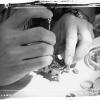How To Use This Back Case Opener Accessories?
-
Recently Browsing
- No registered users viewing this page.
-
Topics
-
Posts
-
By RichardHarris123 · Posted
Hello and welcome from Leeds. We don't believe in stupid questions. -
By HenryNorton · Posted
I'm struggling to find information on adjusting a Seiko bracelet. I can pull the locking pins out but the links remain very much together. I don't want to bend anything without being sure I've tried everything. Anyone else adjusted one of these? -
Thought I’d say hi. I’m from outside of Glasgow and have a small collection of watches, which I love. My love of all things watch comes from my Gran having been a Jeweller, and also from being the custodian of a 1979 Omega and also a few vintage Timex mechanical watches. I have some more modern watches as well and i love them all. I’ve recently started looking into watch repair and assembly as I’d love to know more to see if I could work on / service some of the watches myself. To that end I recently assembled an inexpensive automatic GMT using odd parts, a Seiko movement, and by referring to many YouTube videos. Hand setting caused me no end of pain and once I receive a new second hand I’ll try again. Difficult but very therapeutic - many thanks in advance as I’m sure to ask so many “stupid” questions. Best Regards
-
By EtherJunky · Posted
Few years ago I needed to fix a Cornavin my granny gave me (believe the mainspring broke). I couldn't find a watchmaker. There's a keycutting chain in the UK called Timpsons who said they could post it off somewhere and it'd be £250. I wondered around town for a bit and realised that watches are made by people (duh), I'm people, so I can probably give it a go. I did a bit of research, bought a little tool kit, and proceeded to break bits (shock absorbers, naturally). I then put all the parts in a bag for safe keeping. Since then I've developed a healthy fascination with the subject (not an obsession, just a healthy - think about it everyday now - kind of fascination), and amassed a good bit of literature and some cheapy tools. I still haven't fixed the Cornavin (it's a 2614.2H movement, same as a Poljot and I have enough spare parts now) but it'll be the one after my next project. Currently assembling a Raketa 2603 for the practise. I took out the little shock absorbers, struggled to put them back in, walked away for a cuppa and searched the internet for any tips. Then I found this forum, been here before actually, figured I'd join. I feel like I've developed a smidge more book knowledge than practical skill, so that's a point I need to work on. I'm having doubts the Raketa will work once I'm done, but it was cheap enough not to matter and worth the practise. So here we are. Hello
-





Recommended Posts
Join the conversation
You can post now and register later. If you have an account, sign in now to post with your account.
Note: Your post will require moderator approval before it will be visible.